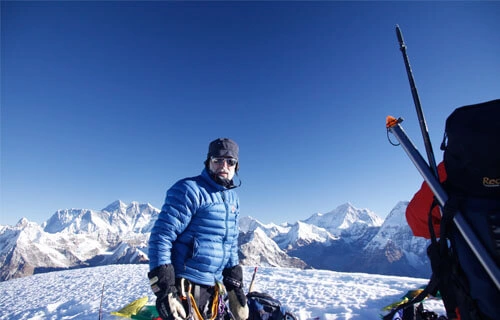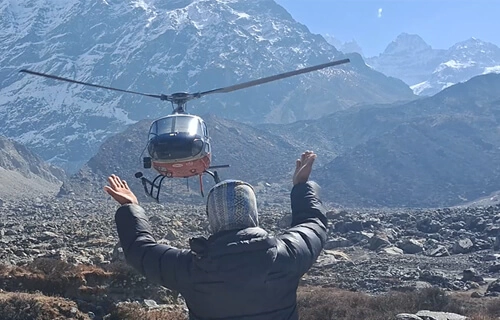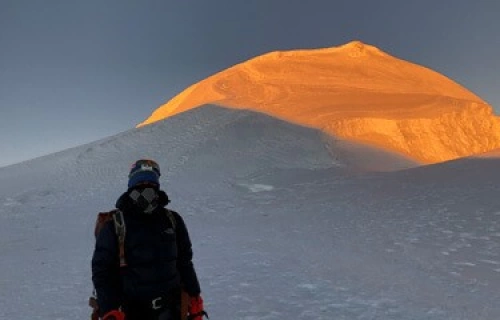About Mera Peak Climbing
Mera Peak Climbing is an exhilarating adventure that combines trekking through stunning landscapes with a rewarding summit experience. It is one of Nepal's most popular trekking peaks in the Everest region. The climb is straightforward but requires good physical and mental preparation. The summit offers stunning views of the over-8000-meter-mountains such as Mt. Everest 8,848 m (29,031 ft), Mt. Kanchenjunga 8,586 m (28,169 ft), Mt. Lhotse 8,516 m (27,940 ft), Mt. Makalu 8,481 m ( 27,825 ft) and Mt. Cho Oyu 8,188 m (26,864 ft).
Mera Peak Climbing Route Overview
Annapurna Foothills Treks has designed the best itinerary for a 21-day Mera Peak Climbing via the lower route, ensuring you'll be well-acclimatized before the Mera Peak Summit push. It begins with a scenic flight from Kathmandu to Lukla 2,840m. From here, the trail descends through forests to the traditional village of Surke (2290m). Surke village resembles the birthplace of Late Pasang Lhamu Sherpa (1961 A.D - 1993 A.D.) the first Nepalese Woman to summit Mount Everest. The trail then ascends gradually to Pakhepani (2,560m) before reaching Paiya (2730m). The trail then continues to Panggom 2,850, a Sherpa village above the Hinku Valley. Moving on towards our major objective, we pass through several Sherpa settlements, namely Ramailo Danda (3276m), Chhatra Khola (3122m), Kothe (3600m), Thangnak (4356m) and finally Khare (5045m).
The climb to Mera Peak is straightforward but requires adequate acclimatization. Accordingly, you will have rest days at Thangnak and Khare to allow your body to adjust to the altitude. At Khare, we will conduct basic climbing training during acclimatization day and recheck your climbing gear before marching towards the summit.
Mera Peak Summit Day
The summit day is typically the most challenging and exciting part of the climb. You will push for the summit in the early morning, often before dawn. The final section of the climb involves a push toward the summit. The terrain can vary, including snow slopes and possibly exposed ridges. Ropes, crampons, and ice axes may be necessary.
Reaching the summit of Mera Peak is, undoubtedly, a remarkable achievement. You will take your time relishing and enjoying the breath-taking panoramic, which includes the world's five tallest mountains which are Mt. Everest 8,848 m / 29,031 ft.), Mt. Kanchenjunga (8,586 m / 28,169 ft.), Mt. Lhotse (8,516 m / 27,940 ft.), Mt. Makalu (8,481 m / 27,825 ft.) and Mt. Cho Oyu (8,188 m / 26,864 ft.). After spending some time on the summit, you will begin your descent.
Retracing Steps to Lukla
The following day, you will descend further, returning to Lukla. This descent helps your body adjust gradually to thicker air and reduces the risk of altitude-related issues. The Mera Peak Climbing is an unforgettable experience that will physically and mentally challenge you. It is an excellent opportunity to explore the pristine beauty of the Everest region and to summit one of Nepal's most popular trekking peaks.
Returning to Lukla by Helicopter Returning to Lukla by helicopter is a great way to conclude your Mera Peak Climbing Trek. It is a scenic and exhilarating way to witness the mountains, and it can also save you a lot of time. The helicopter shuttle service is available from any of these three Sherpa settlements (Khare, Thangnak, and Kothe) and starts from USD 1000 for chartering.
Mera Peak Climbing Difficulty Level
Mera Peak is a famous trekking and climbing destination in Nepal's Khumbu region. The difficulty of climbing Mera Peak depends on several factors, including weather conditions, route choice, personal fitness level, and prior experience.
Mera Peak climbing is considered a technically straightforward climb, best suited for climbers with previous trekking experience and basic mountaineering skills. However, it does not require advanced technical mountaineering skills like using ropes for steep rock or ice climbing.
Despite the route not being that technical, climbing Mera Peak does require a good level of physical fitness and endurance due to the altitude and the demanding nature of high-altitude trekking (long and challenging days of trekking, including steep ascents and descents, often in harsh weather conditions). Thus, we suggest our guests have prior trekking experience at high altitudes and be comfortable with multi-day trekking and camping. Undertaking comprehensive physical training before attempting the climb, including cardiovascular exercises, strength training, and endurance building, is highly recommended.
Preparing yourself for Mera Peak Climbing
Preparing for Mera Peak climbing is an exciting and challenging endeavour. Mera Peak is a stimulating climb, and appropriate preparation is key for a successful ascent and safe experience undertaking Mera Peak climbing.
Physical Preparation
Climbing Mera Peak is a demanding one that requires a good level of physical fitness. Prepare yourself by working on cardiovascular exercises like running, hiking, cycling, or swimming to improve your endurance. Include strength training exercises to build your leg muscles, core strength, and upper body strength.
Another factor is acclimatization. Keeping that in mind, we've designed our itinerary with enough rest days and gradual altitude gains to allow your body to adjust to the thin air. Though Mera Peak climbing is a straightforward climb, it does involve some basic mountaineering techniques and the use of crampons, ice axes, and ropes. Joining a mountaineering course to learn and sharpen necessary climbing skills will be helpful if you are not experienced in alpine climbing.
Mental Preparation
Preparing yourself mentally plays a crucial role in achieving the goal (reaching the Mera Peak summit) you've set. Climbers must be mentally prepared to deal with strenuous situations at high altitudes and give their best effort to reach High Camp (summit night) in good physical condition. Prepare yourself mentally by researching and understanding the route, challenges, and risks involved. Build mental flexibility, a positive mindset, and confidence in your abilities. It can also be helpful to connect with experienced climbers or enrol in a climbing community to gain intuitions and guidance.
Travel Insurance for Mera Peak Climbing
Travel insurance is essential for adventure activities like climbing Mera Peak (6,476 m above sea level). The insurance should cover emergency evacuation, injury, lost baggage, liability, and medical treatment. The insurance must cover all the activities you undertake during your Nepal stay. Annapurna Foothills Treks and Expeditions Pvt. Ltd. can organize the appropriate medical response based on your policy. Click here: For more detail about Travel Insurance.
More Itineraries to Explore
1. Reach the summit of Mera Peak in just 16 days
The Rapid Mera Peak expedition is designed for those seeking a challenging and rewarding climb within a shorter time frame. This program caters to individuals with strong mountaineering experience, allowing them to reach the summit of Mera Peak (6476m) efficiently. Trip Cost (all inclusive): US$ 2350 per person
2. Mera Peak Climbing with Helicopter Return Trek 16 Days
Ever dreamed of conquering a Himalayan peak? The Mera Peak Climb with Helicopter Descent offers an unforgettable adventure that combines the thrill of summiting a majestic mountain with a scenic helicopter ride back. Trip Cost starts (all inclusive): US$ 2650 per person
3. Mera Peak Climbing via Panch Pokhari 22 Days
This is the ultimate way to enjoy the beauty of Hinku Valley, Rai & Sherpa ethnicity, well-preserved culture and traditions. An ideal pick for best acclimatization, No flights are needed as we will be driving to the Trip starting point (Bung) and Trip ending point (Phaplu). Trip Cost (all inclusive): US$ 2350 per person
4. Three Peaks in Everest Region 30 Days
Our Three Peaks in Everest Region combines three of the highest trekking peaks in Nepal: Mera Peak (6,476 m), Island Peak (6,189 m), and Lobuche East Peak (6,119 m). Trip Cost (all inclusive): US$ 4500 per person
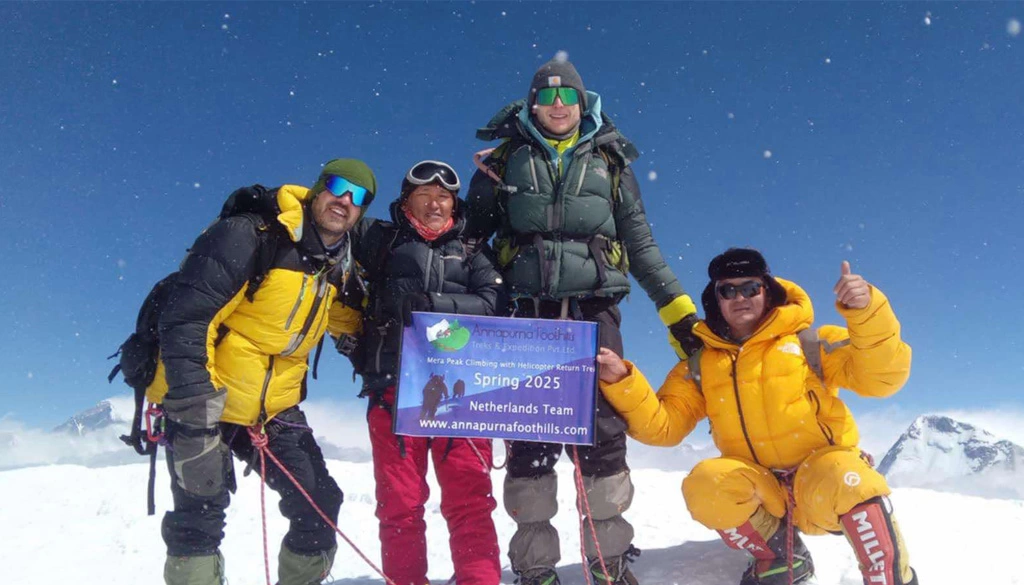
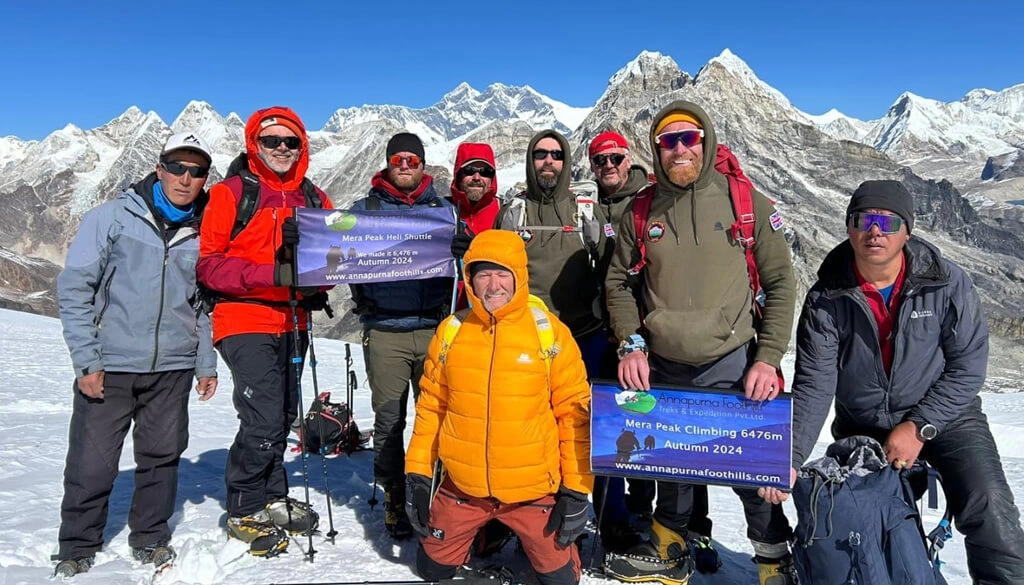
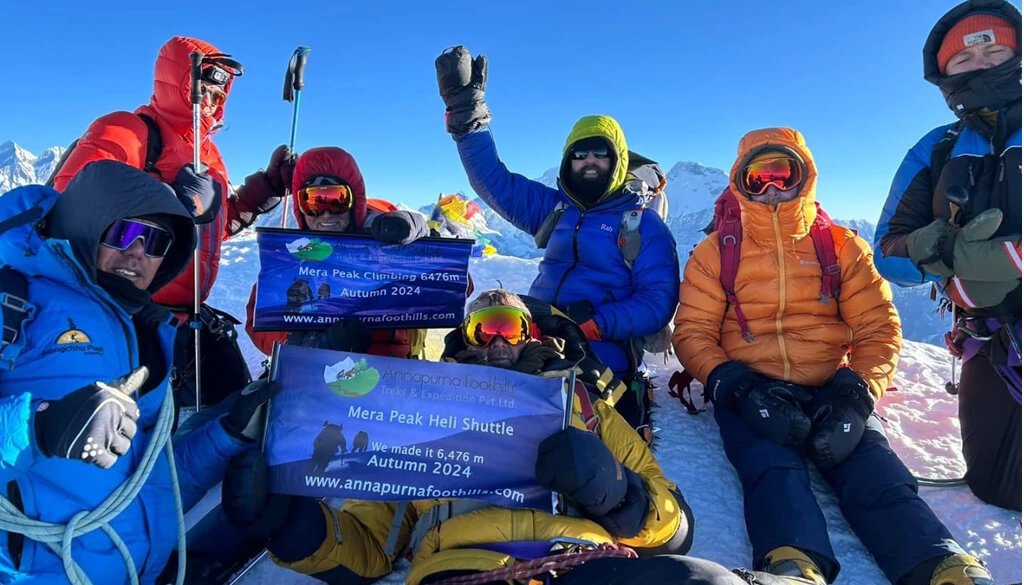
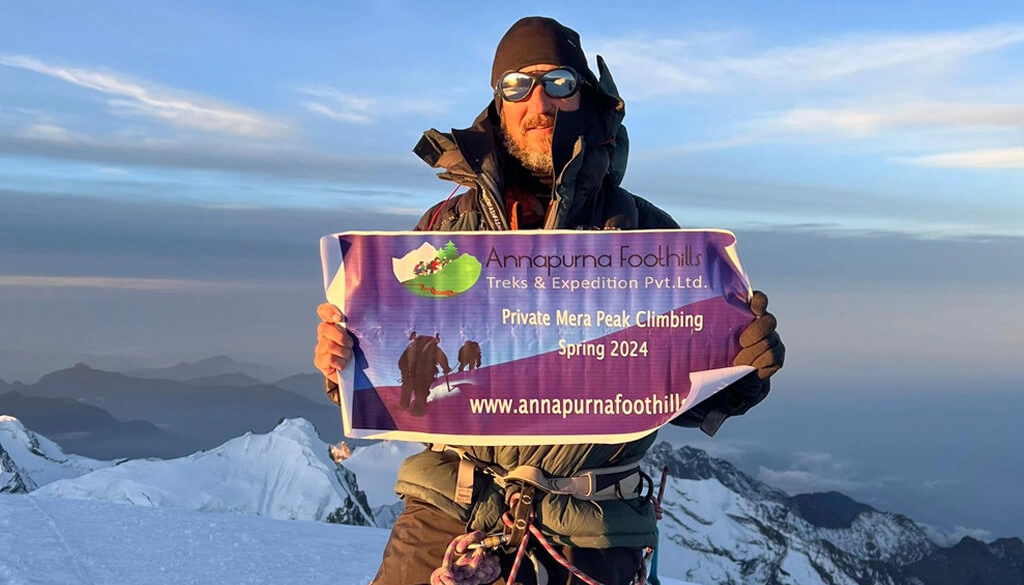
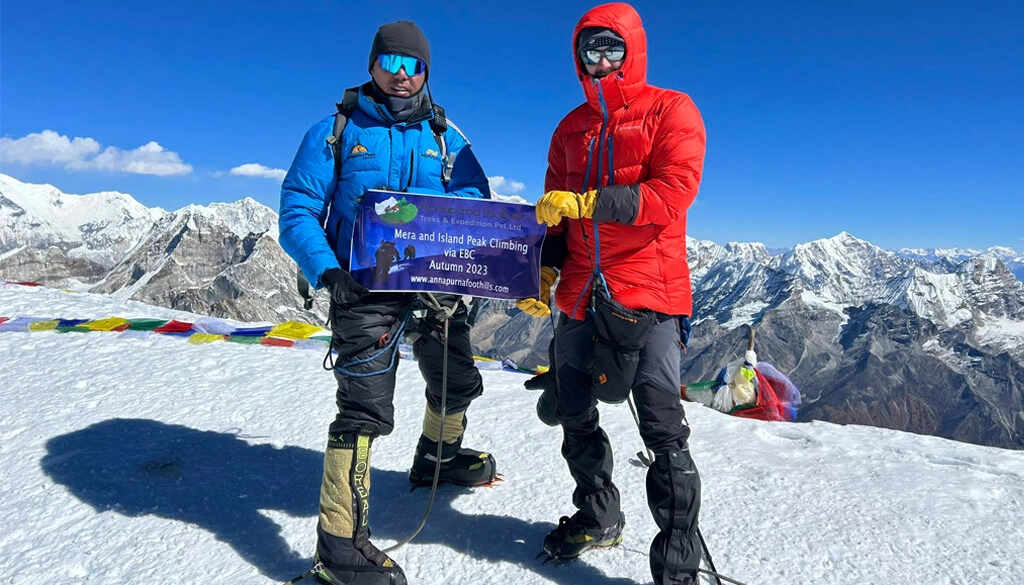
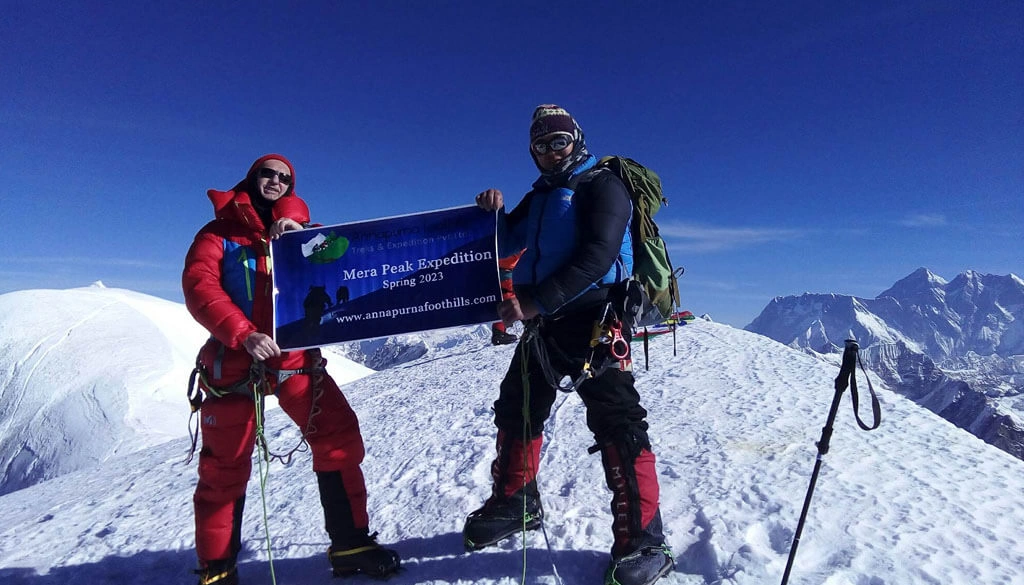
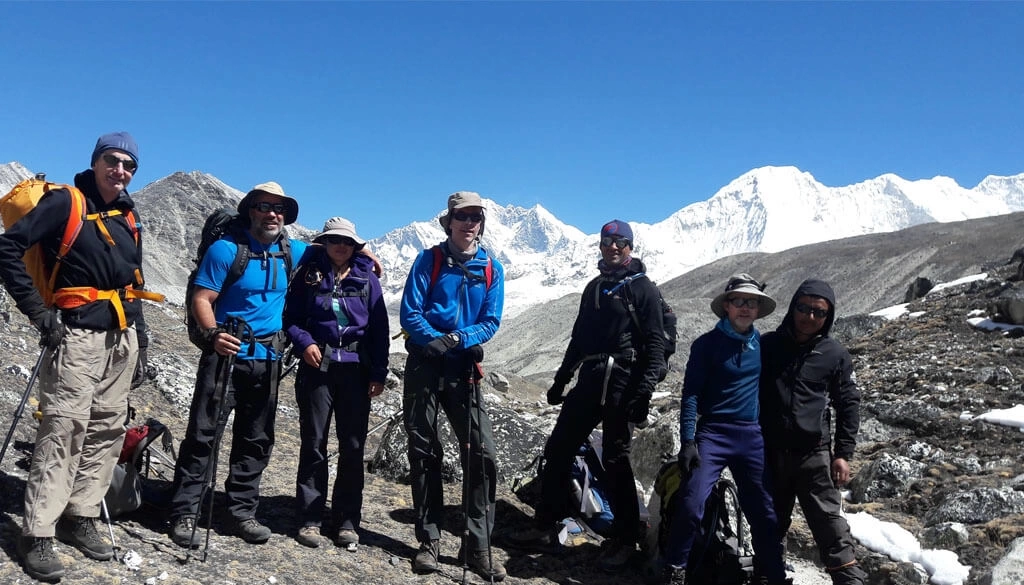
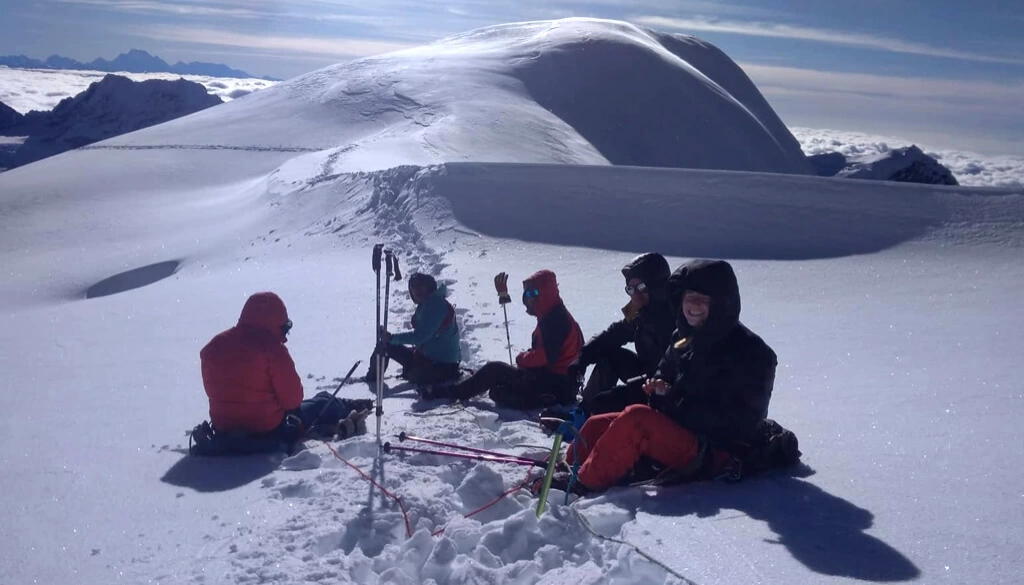
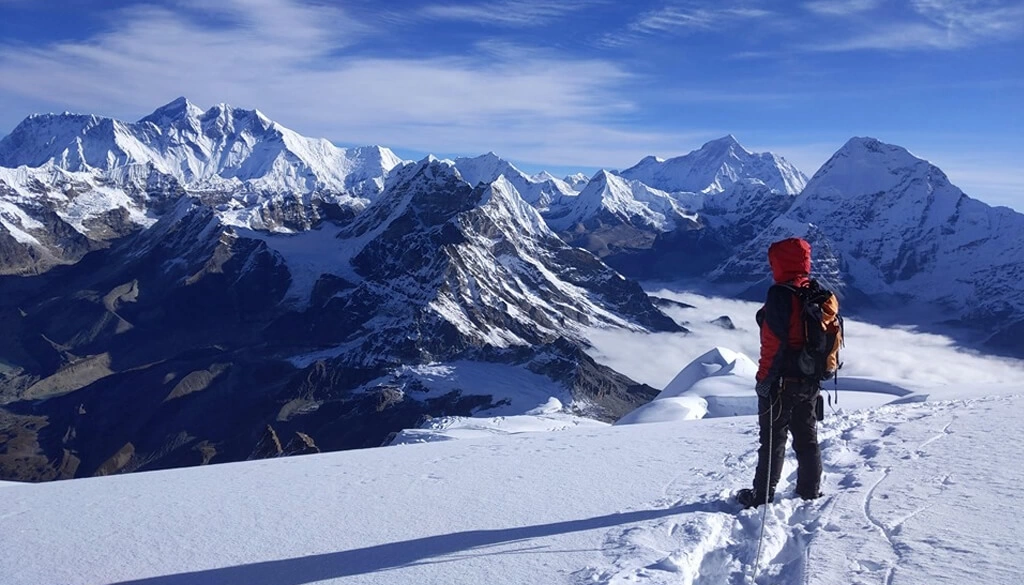
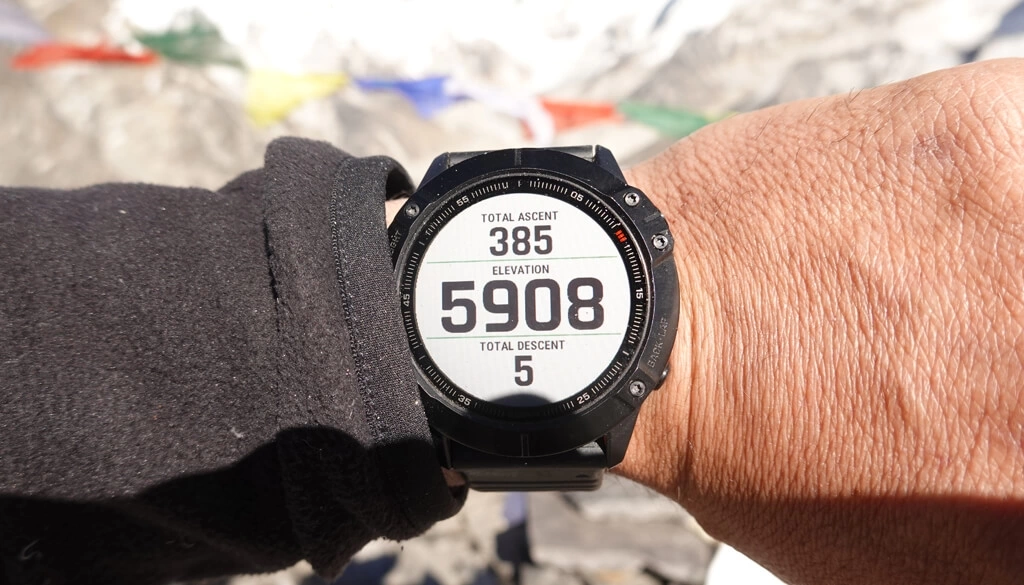
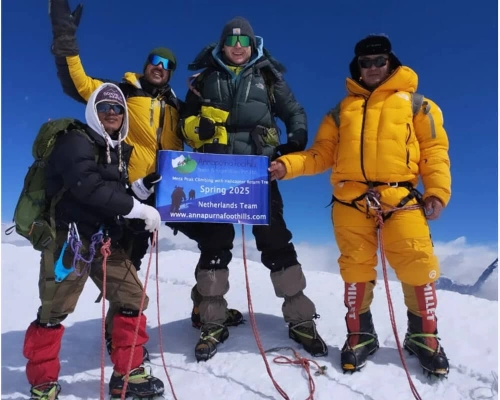
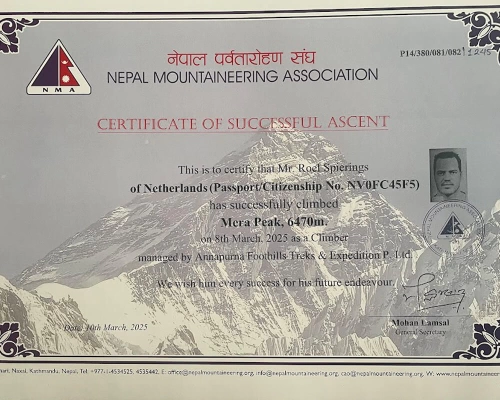
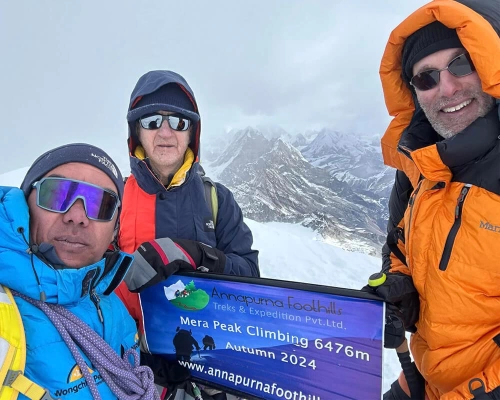
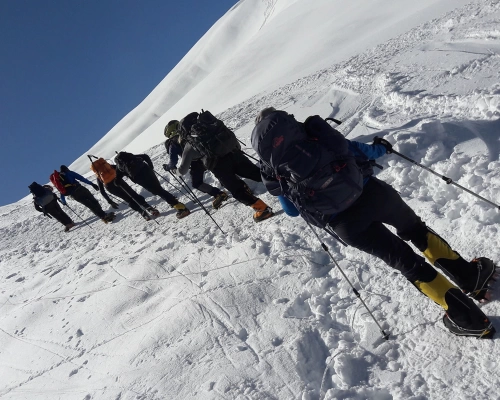
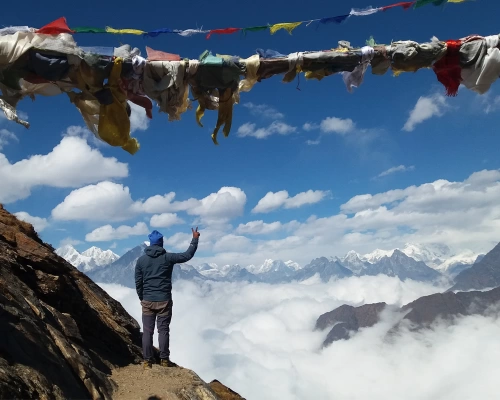
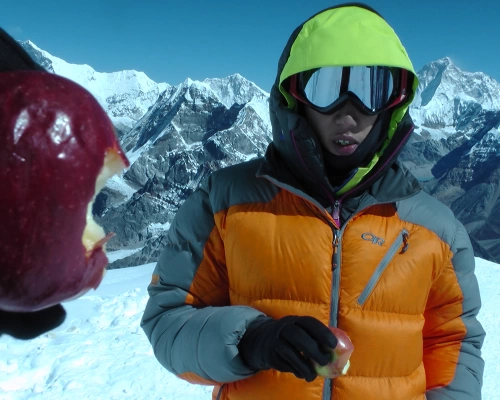
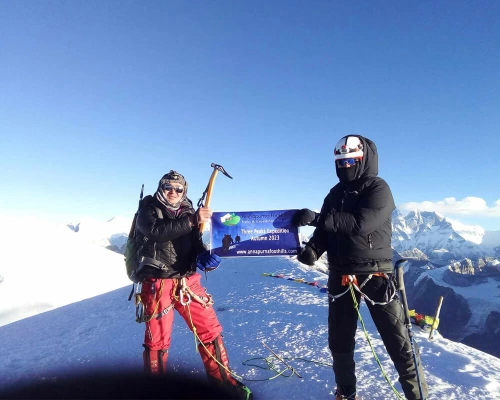
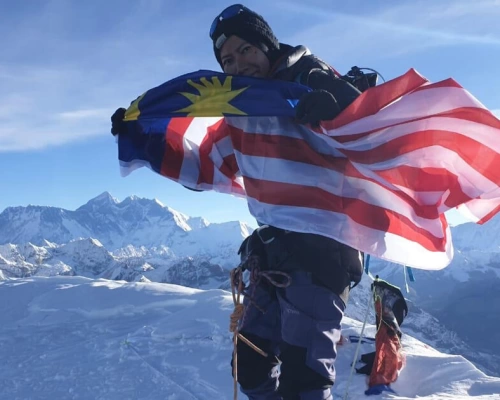
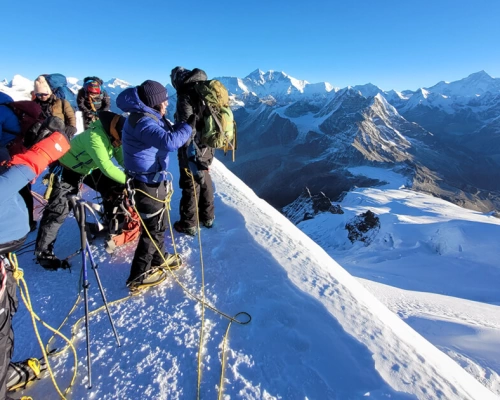
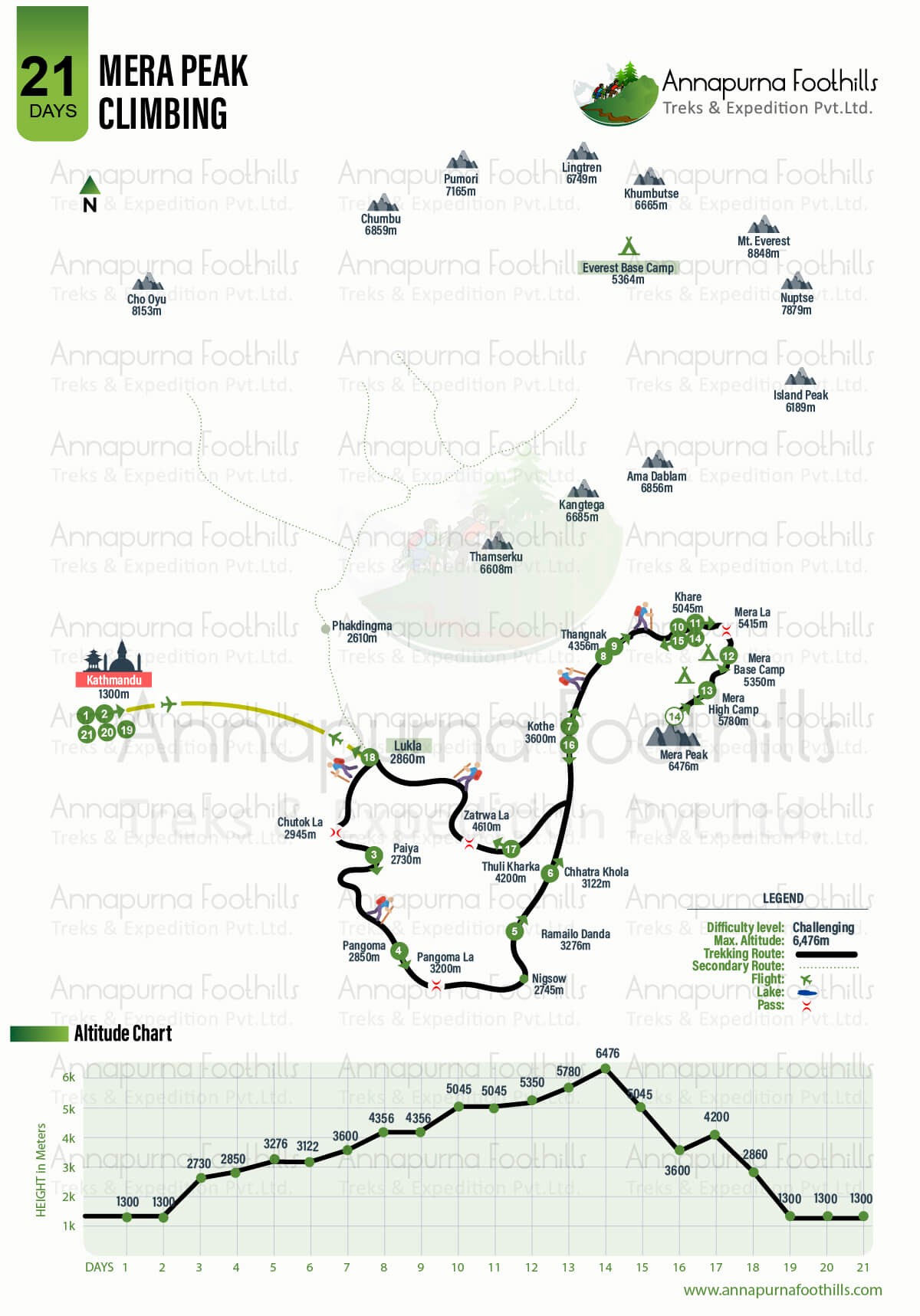
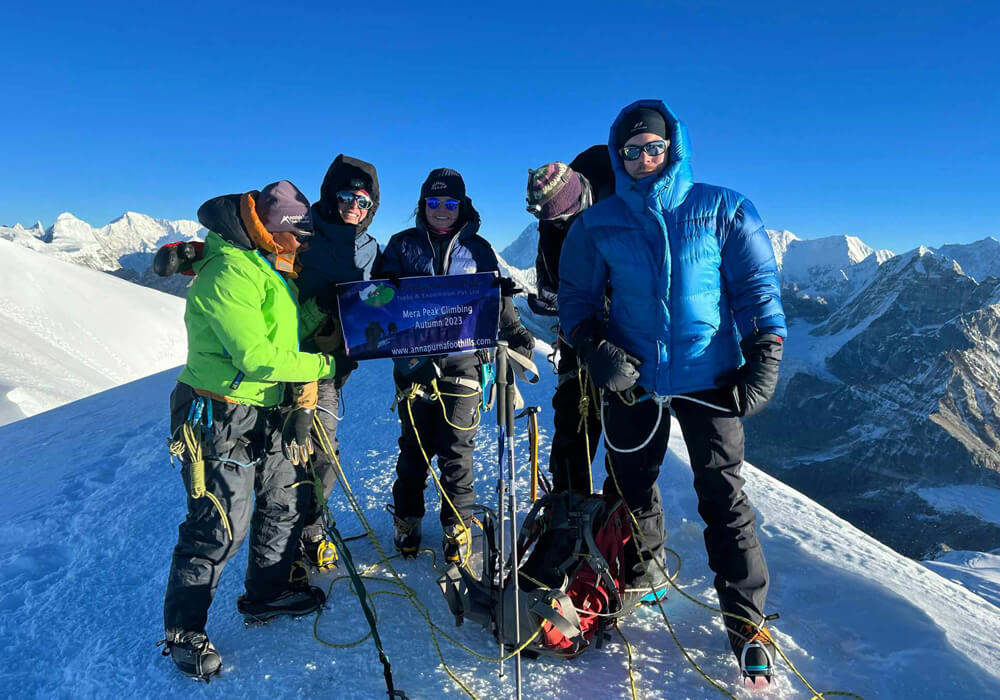
.jpg)
